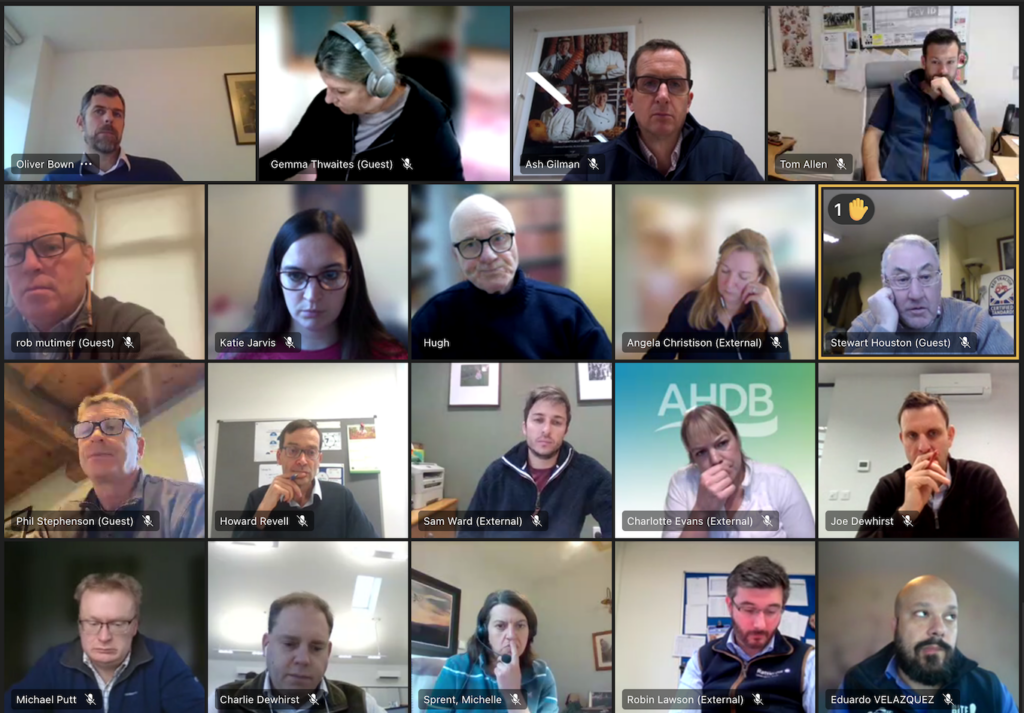Members of the NPA’s Pig Industry Group (PIG) highlighted falling pig prices and the recent weather as current concerns during an online meeting this week.
“Everything is looking very, very wet,” the Eastern representative said. “I’m concerned for local wheat and straw availability going into next year. What has been drilled is not looking very good at the moment. A lot of it is underwater still, and some people have given up and are drilling more sugar beet, instead.
“Lagoons are looking very full at the moment and are extortionately expensive to empty.”
The Midland representative said Lincolnshire had been ‘completely flooded out’, with producers having to make do with ‘average straw quality’, requiring, in many cases, the use of mycotoxin binders.
The South-Central producer highlighted the limited availability and high prices of straw, while the North Region representatives also pointed to issues with autumn sown crops and the potential for a difficult 2024 harvest.
Commenting on the impact on outdoor pig producers, NPA chairman Rob Mutimer said: “It’s wet and miserable, but I guess we’re used to it and I haven’t heard of any really big problems, but straw usage is massive. The big issue on that front is how long it keeps raining.”
Price concerns
The South-Central representative expressed concern about the pig price coming down at a time when cereal prices are potentially going to rise again. “Soya has been very expensive although it has come off in last few days,” he said.
He also highlighted how producers are continuing to leave the sector – another large producer in the region has decided to cull their herd.
Concern about the falling pig price is tempered by relief at the relatively sedate pace of decline. “There’s a bit more positivity out there,” the Midlands correspondent said. “The price is coming down slowly, and it is more stable. Profitability is there at the minute, so hopefully it carries on into next year.”
The Northern representative added: “There is a bit more positivity, but we are just hoping for a settled period.
“Growth rates are pretty good though and profitability will remain as long as prices don’t fall for too much longer. They are at least coming down slowly, which is good.”
The processor representatives said Christmas pork production was ‘under control’, with pig weights coming off slightly as pigs are brought forward.
One reported that there were no labour shortage issues, but that staff costs remain very high. He highlighted moves within the processing sector to increase export volumes in China and Japan.
EU competition
The group explored why the market was still coming down heading into Christmas at a time of relatively tight pig supplies. On top of the ongoing impact of fhe cost-of-living crisis on demand, cheaper EU prices, on average around 28p below UK prices, are making imports more attractive, particularly on the wholesale markets.
“Wholesale demand for British meat in London is virtually zero, at the moment, because there’s such a massive difference in price. Some abattoirs have been not sending anything to Smithfield for the last six weeks,” one producer said.
The EU market is being hit by the competitiveness of other parts of the world, such as the US and Brazil, on the export markets, which has left a ‘glut of cheap pork on the EU market, some of which is making its way to the UK, the marketing representative said.
Investment moving again
Hugh Crabtree, the NPA’s vice chair, discussed the situation in the buildings and equipment sector.
“There is investment going on – there is a bit of movement. My information is that the construction companies are active and seem to have work going forward into next year of one sort or another,” he said.
Citing the Bite Into British campaign, he urged producers to consider the same principles of buying British products and equipment when investing in their units.
Feed trends
The feed industry representative painted a mixed picture. “Wheat is just under £200/tonne but if you look to the futures, for November 2024, there’s a premium on top, which reflects the difficult situation out there with the weather at the moment.
“Barley’s trading down in the £160s, so it’s running pretty cheap, but, again, there’s about an £18 premium for November next year.
“Soya recently shot up to £500, but it has come back down to £450 or so. This is related to weather, dollar movements and China.”
She pointed out that a lot of producers have now come off higher priced contracts, in some cases around £300/t for wheat, which will significantly improve the overall cost outlook.




